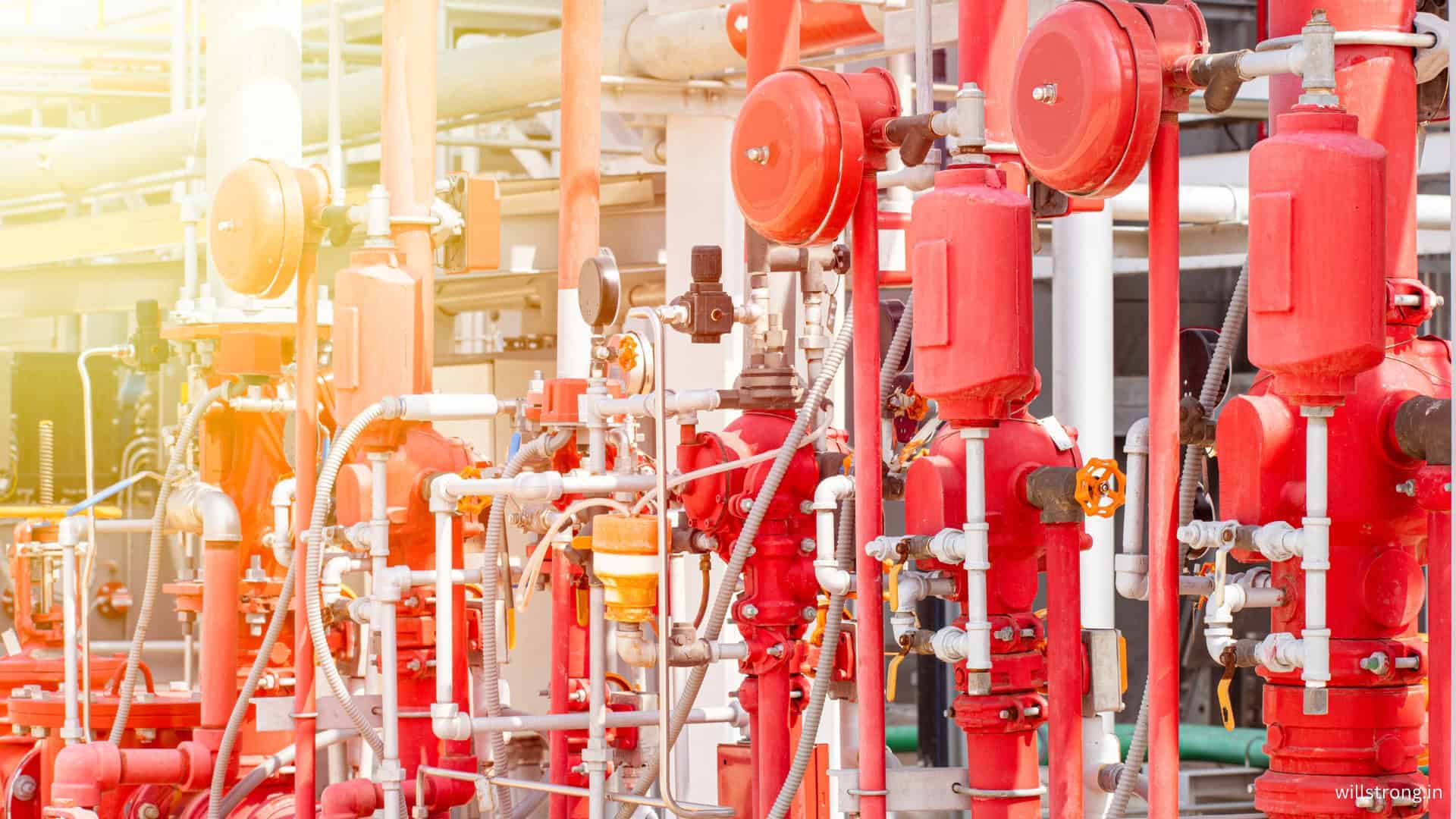When it comes to protecting your facility from fire, having the right fire suppression system is critical. Whether you manage an office, a factory, or a power plant, fires can cause significant damage, endangering lives and costing businesses millions.
But how do you decide which fire suppression system is best for your facility?
In this guide, we’ll walk you through the most common fire suppression systems, their pros and cons, and help you make an informed choice for your building’s safety.

A fire suppression system is a set of devices designed to detect and control fires. Unlike standard fire alarms, which alert people to evacuate, fire suppression systems are equipped to automatically respond by releasing extinguishing agents to put out the fire or contain it.
These systems are crucial in areas where traditional firefighting might not be as effective or fast enough to prevent significant damage.
Here are the most common types of fire suppression systems:
Water-based systems are the most widely used and come in two main types: sprinklers and water mist systems.
Chemical-based systems, also known as clean agent systems, use specialized chemicals to put out fires quickly without damaging equipment.
Foam-based systems are commonly used in facilities with high risks of flammable liquid fires, such as oil refineries or chemical plants. The foam spreads over the fire, cutting off oxygen and cooling the flames.
Pros:
Cons:
Powder systems use dry chemicals to put out fires by interrupting the chemical reactions in the fire. These are often used in industrial settings with high-risk machinery or flammable gases.
Pros:
Cons:
When deciding on a fire suppression system, consider the following:
Different facilities have different fire hazards. For example:
Some systems, like CO₂, can pose a risk to people because they reduce oxygen levels. If the area is usually occupied, a safer option like water mist or chemical agents may be better.
Facilities with sensitive equipment, such as hospitals, labs, or data centers, require non-damaging suppression systems. Water can cause damage, so clean agent systems or water mist may be preferable.
It’s important to balance the initial cost of installation with long-term maintenance requirements. Water-based systems are often cheaper upfront, but may require more frequent inspections and repairs. Foam or chemical systems might have higher costs but could be more efficient in specific environments.
Choosing the right fire suppression system is a vital part of your facility’s fire safety strategy.
Consider your building’s specific risks, the types of fires that are most likely to occur, and the needs of the people and equipment inside.
Investing in the right system can save lives, protect your assets, and prevent business interruptions.